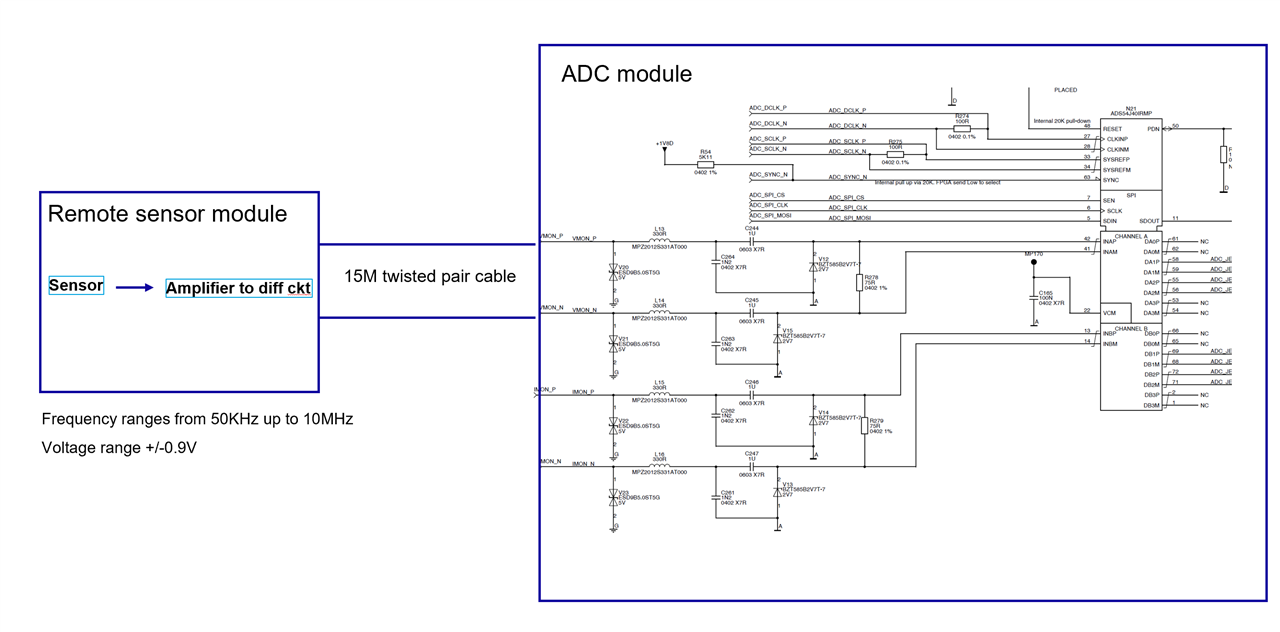Other Parts Discussed in Thread: ADC3683
Hi, Support
The ENOB for ADSj40 is about 11.3 bits when Fin = 10MHz. If I need to digitize the signal at 50KHz or 100KHz, what will be the ENOB?
Is there a table for lower frequency range signals?
thanks
Li
This thread has been locked.
If you have a related question, please click the "Ask a related question" button in the top right corner. The newly created question will be automatically linked to this question.
Hi Li,
The ADCs ENOB will be the same at frequencies lower than 10MHz. However, since you will be sampling a signal that low, you will need to DC couple. Which means you need to use an amplifier to drive the analog inputs of the ADC. This will lower the ENOB when you cascade the two devices.
Regards,
Rob
Hi, Rob.
Thanks for the info. We indeed use the DC coupled. we have a remote voltage sensor device output to an differential amplifier. The voltage range of the amplifier is +/-0.9V. After 15m cable, the signal get connected to the ADC input via a filter cap. The remote sensor signal has a frequency range between 50KHz and 10MHz. So, in our application, we need to detect all ranges of frequencies.
So is this connection correct?? and when you say, lower the ENOB when use together with opa, what do you mean here??
how I can calculate it??
also regarding the ADS54j40 ENOD, the highest number is 11.3bits. In the datasheet, it claims 14bits ADC, is the 11.3bits the best it can achieve??
thank you.
Li
Hi Li,
Please provide a block diagram on what you plan to do.
The amp will have inherent noise and the ADC will have inherent noise. This is mostly thermal and is inherent to any active device you use that has power supply connected to it.
Effectively you will RSS(root-sum-square) the amplifier's noise and the ADC's noise together. This will impact the overall noise of the entire system or signal chain.
Here is an article that goes over how to do noise calculations.
https://www.analog.com/media/en/training-seminars/tutorials/mt-230.pdf
&
If the ADC has 11.3ENOB stated in the datasheet, this is the best is can achieve. The degradation from 14bits to 11.3bits/ENOB is the thermal noise of the ADC.
Again, the link to the noise paper, should describe this.
Regards,
Rob
Thank you Rob for the info.
please see attached for the diagram.
and if the ENOB is mainly related with thermal noise, is there a specs when operate at different temperatures?? I don't see it in the datasheet..

thank you.
Li
Thanks LI,
The temperature range of the ADC is covered in the datasheet, so all the specification numbers would include over PVT or process, voltage and temp.
So, if you feel you need more ENOB, then you may need to look at another part, like 16 or 18bits. The ADC3683 comes to mind. See link:
Regards,
Rob